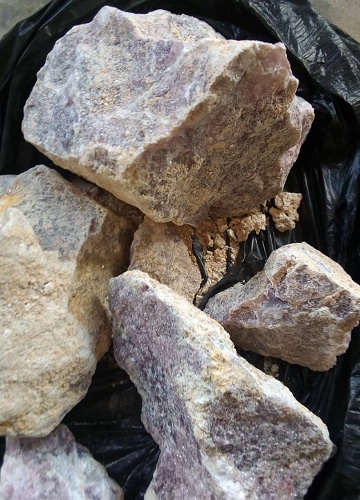In this article, we will talk about different types of lithium deposits and their uses. Lithium is a highly valuable metal that is widely used in various industries, including energy storage, ceramics, and pharmaceuticals. It is a crucial component of lithium-ion batteries that power electric vehicles, mobile phones, laptops, and other electronic devices.
The global demand for lithium is rapidly increasing due to the growing demand for renewable energy and the electrification of transportation.
Lithium is typically found in various types of geological deposits, such as lithium brine deposits, pegmatite lithium deposits and sedimentary lithium deposits. Each with unique characteristics that determine its economic viability and the extraction method required. This blog post will explore the different types of lithium deposits and their characteristics.
Pegmatite Deposits:
Pegmatite deposits are the most common source of lithium. These deposits are formed by the crystallization of magma, and they contain large, high-grade lithium minerals.
Pegmatites can be found worldwide, but the largest deposits are in Australia, Canada, and the United States. The lithium minerals in pegmatites are typically spodumene or petalite, mined using open-pit mining methods.
Brine Deposits:
Brine deposits are formed by the evaporation of salt water, and they contain dissolved lithium ions. They are typically found in dry regions, such as the Atacama Desert in Chile, the Salar de Atacama, and the Hombre Muerto in Argentina.
Brine deposits are much cheaper to extract compared to pegmatite deposits since they require only evaporation to extract lithium. The process involves pumping brine into large evaporation ponds where the water is allowed to evaporate, leaving behind lithium salts.
Read about lepidolite minerals and their uses
Sedimentary Deposits:
The accumulation of lithium-bearing sediments, such as clay and sandstones, forms sedimentary deposits. The most common type of sedimentary deposit is known as hectorite clay, which is found in the McDermitt Caldera in Nevada and Oregon.
Sedimentary deposits are typically low-grade, and the lithium is tightly bound to the mineral matrix, making it difficult and expensive to extract.
Geothermal Brine Deposits:
Geothermal brine deposits are formed by the circulation of hot water in volcanic regions. These deposits are typically found in the Salton Sea region of California and the Taupo Volcanic Zone in New Zealand.
The lithium in geothermal brines is commonly associated with boron and can be extracted using selective precipitation methods.
Lithium-bearing Mineral Sands:
Lithium-bearing mineral sands are found in beach sands and dunes along the coastlines of Australia and South America. The minerals in these deposits are typically zircon, rutile, and ilmenite, and lithium is found in the mineral spodumene.
Lithium-bearing mineral sands are typically low-grade, and the extraction process is expensive.
Conclusion
In conclusion, lithium is a critical metal widely used in various industries, and its demand is rapidly increasing due to the growth in renewable energy and the electrification of transportation.
Understanding the different types of lithium deposits and their characteristics is crucial for determining the economic viability of lithium extraction and selecting the appropriate extraction method.
Pegmatite and brine deposits are the most common sources of lithium, but other types of deposits, such as sedimentary deposits, geothermal brine deposits, and lithium-bearing mineral sands, also exist.
